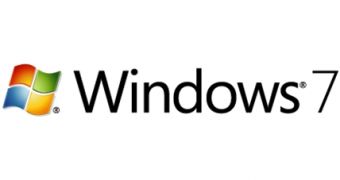Microsoft first confirmed the Stock Keeping Unit strategy for Windows 7 at the start of February 2009, promising a simplified product line-up, as well as a marketing strategy focusing in particular on the Home Premium and Professional editions. Even at that time, Home Basic was marginalized, and barely mentioned altogether. In fact, out of the entire information shared, the software giant deals with Windows 7 Home Basic in just a single phrase.
“We know emerging markets have unique needs and we will offer Windows 7 Home Basic, only in emerging markets, for customers looking for an entry-point Windows experience on a full-size value PC,” the company noted back in February.
Of course, the third-world audience of Windows 7 Home Basic is the reason why the software giant ignores the SKU altogether. The Compare Editions page on Microsoft.com doesn’t even feature Home Basic, while allowing users to compare Starter, Home Premium, Professional and Ultimate. Enterprise is not mentioned either; however, such a mention would be redundant especially since the edition is equivalent to Ultimate from all points of view.
But the same is not the case for Home Basic, a SKU treated like the ignored/missing Windows 7 link, and pushed to the periphery of the universe orbiting around the successor of Windows Vista. At the same time, users in developed countries won’t be able to get their hands on Windows 7 Home Basic. The operating system won’t be available for retail, nor as an upgrade edition. It will only be sold on low-end computers in emerging markets.
Windows 7 Home Basic installation
Pre-installed operating systems fail to deliver the raw but “all-you-can-eat” deployment experience to end users, so I thought I’d give you a taste. Just to be clear, I attempted an exercise of irony in the first half of the above statement. The Windows 7 installation experience has nothing raw about it, as it has been optimized so that basic computer users can go through the steps and follow the guidance to deploy the operating system.
Testers that have played around with the Release Candidate development milestone of Windows 7 will find nothing new when installing the RTM of Home Basic. Just browse the screenshots included below in order to get an idea of what installing Windows 7 RTM Home Basic looks and feels like.
Windows 7 Home Basic
In all fairness, Windows 7 Home Basic comes closest to the Starter SKU, but it also features a tad of Home Premium flavor. Still, don’t expect a full Windows 7 experience, as this is not the case. Just like Starter, Home Basic is also stripped of features and capabilities, and is designed to offer only a basic UX. However, users will find that this edition of the operating system indeed has more to offer than Starter. This because, while Starter is Windows 7 stripped bare, Home Basic does offer a few extra features.
First off, users of Windows 7 Home Basic will find that they are able to change the desktop background. Starter lacks this feature entirely, no matter the workaround users might try to deploy. Home Basic users will be able, for example, to leverage the “Set as desktop background” option in Windows Photo Viewer in order to change the default wallpaper.
In addition, Home Basic also features Windows Aero, albeit only partially. There aren’t any glassy, translucency effects for Home Basic, not to mention transparency. Users will not be able to enjoy Aero Peek or Show Desktop, but they can use Aero Snap, Jump Lists and a limited version of Live Thumbnail Previews. All in all, Home Basic does bring more eye-candy compared to starter, but does not deliver the full experience of Windows Aero.
As far as Windows Home Premium features go, Windows 7 Home Basic comes with Desktop Windows Manages, and contains Windows Mobility Center, which Starter did not, but that are included in the superseding editions of the latest Windows client. Microsoft even allows Windows 7 Home Basic to be used with virtualization technologies, unlike Starter.
“Use with Virtualization Technologies. Instead of using the software directly on the licensed computer, you may install and use the software within only one virtual (or otherwise emulated) hardware system on the licensed computer. When used in a virtualized environment, content protected by digital rights management technology, BitLocker or any full volume disk drive encryption technology may not be as secure as protected content not in a virtualized environment. You should comply with all domestic and international laws that apply to such protected content,” reads an excerpt from the Windows 7 Home Basic EULA.
What is Home Basic missing?
Well, all the Windows 7 good stuff, just like Starter. Don’t expect to run Windows 7 Home Basic on touch-capable machines and actually use touch, because Microsoft amputated multi-touch from the SKU. At the same time, there are no premium games, or Windows Media Center, or any of the features associated with the professional or high-end editions of Windows 7.
Looking for features such as Encrypting File System, Location Aware Printing, Remote Desktop Host, Presentation Mode, Windows Sever domain or Windows XP Mode? You won’t find any in Windows 7 Home Basic. As for AppLocker, BitLocker Drive Encryption, BranchCache Distributed Cache, DirectAccess, subsystems for UNIX-based applications, Multilingual User Interface Packs and Virtual Hard Disk Booting, users will need to go with Enterprise or Ultimate.
The conclusion is simple. Customers won’t be able to buy Windows 7 Home Basic in developed markets, but why would they want to? Even if they had the same options as consumers in emerging countries, Windows 7 Home Premium would simply be a much better choice. And I for one can’t even begin to understand why there was a need to produce both Starter and Home Basic, while any of the two, or a marriage between the two, would have sufficed.

 14 DAY TRIAL //
14 DAY TRIAL // 












































































































